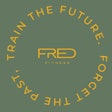Personal trainers usually structure their sessions around strength training. But, this trainer believes the best way to help clients achieve their fitness goals is by also focusing on cardio.
One day I was running on a treadmill at the gym, listening to Britney Spears blast through the iPod headphones of the woman walking on the treadmill next to me. A few minutes later, having suddenly noticed the absence of Britney's voice, I spotted the woman in the corner of the gym, her personal trainer watching her form as she performed biceps curls with dumbbells. Looking around the room, I saw a number of personal trainers supervising their clients as they squatted, lunged, bench-pressed, leg-curled and abdominal-crunched their way through strength-training workouts. It's the tradition among personal trainers to spend client sessions performing weight training, leaving clients to perform cardio workouts on their own. This could seem logical, especially in a society bombarded with images of what is attractive, since lifting weights may be the quickest way to improve a person's physical appearance and self-image. Plus, strength training has many functional benefits - improved muscular strength, posture and coordination; reversal of muscle tissue loss that accompanies aging; and increased bone mineral density, reducing the risk of osteoporosis. But, what about the cardio? While personal trainers help their clients get stronger and more "toned," where are they when it comes to cardiovascular endurance? Cardio endurance is arguably the most important component of health-related fitness because the functioning of the heart, lungs and circulatory system are so essential to overall health.
While people die every day from weak hearts, no one has ever died of a weak biceps muscle.
The main problem with a lack of guidance during cardio training is that most people, when performing cardio, are not focused on what they're doing. They're listening to their iPods or reading magazines. Since research has shown that exercise intensity, rather than its volume or frequency, is more important for improving and maintaining fitness, 20 minutes of steady-state cardio at an intensity easy enough to read a magazine isn't sufficient. Personal trainers can make a big difference in this regard.




































